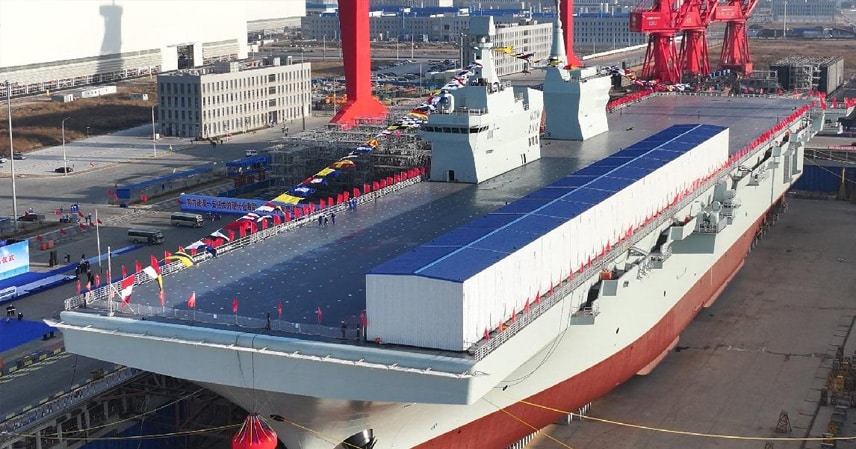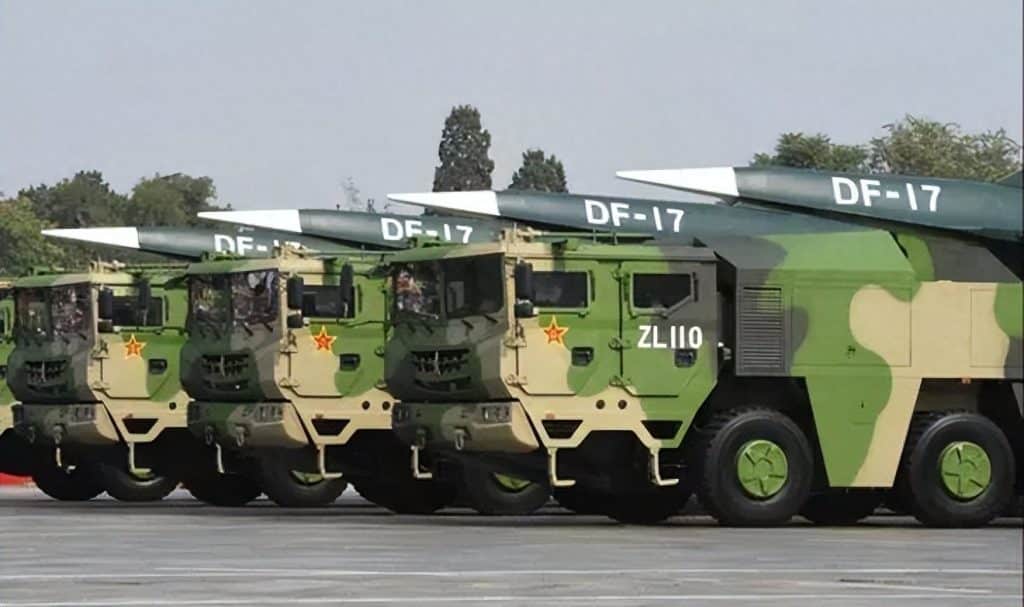Recent photos from Hudong–Zhonghua Shipyard have gone viral in defense circles, showing that China’s first 076-class amphibious assault ship, the “Sichuan”, has entered the final outfitting stage. The construction sheds covering its electromagnetic catapult system have been removed, its dual-band S-band AESA radar is firmly installed on the island, and even the jet blast deflectors on deck have been raised. These details send a clear message: the “Sichuan” is about to move into sea trials, and the long-awaited reality of carrier-based drones launched via electromagnetic catapult is now within reach. The eventual deployment of the J-35 stealth carrier fighter aboard the 076-class is also seen as inevitable.
Rapid Progress and Advanced Systems
From launch to nearing the end of outfitting, the “Sichuan” has taken only nine months. This rapid timeline reflects China’s ability to integrate cutting-edge naval technologies. Among them, the electromagnetic catapult system stands out as the core of its combat capability. Despite benefiting from the proven data of the Fujian aircraft carrier, engineers treated every trial with extreme caution, as this system directly determines aircraft sortie rates and overall combat efficiency. Once fully mastered, the outfitting process of future 076-class ships will likely accelerate even further.
The installation of the dual-band radar also carries great significance. This radar serves as the “eyes and brain” of the Sichuan, enabling wide-area surveillance and terminal air-defense fire control. Naval radar systems are usually installed after launch to prevent hull deformation from damaging sensitive T/R modules and to ensure proper integration with shipborne air-defense systems. In just nine months, each step was carefully synchronized to guarantee full combat readiness once commissioned.
A Global First: Amphibious Ship with Catapult System
The “Sichuan” is the world’s first amphibious assault ship equipped with both electromagnetic catapult and arresting gear. Even Western navies will likely need years to field comparable capabilities. This breakthrough is made possible by China’s advances in integrated electric propulsion systems, which support the enormous power demands of catapult operations.
According to official descriptions, the 076-class can operate fixed-wing aircraft, helicopters, and amphibious vehicles. The key lies in the phrase “fixed-wing aircraft.” With an estimated catapult length of up to 130 meters, the system could launch not only stealth drones and large fixed-wing UAVs, but also carrier-based fighters like the J-15T, J-15D, and J-35. While not a full aircraft carrier, the 076 already brings carrier-like functionality, putting China ahead of other navies in amphibious aviation power.
Unmanned Warfare at the Core
In modern warfare, drones are no longer side players. They now dominate roles from reconnaissance and precision strikes to air-defense suppression. The 076’s biggest advantage lies in unmanned operations. UAVs are durable in high-risk environments, capable of long-endurance missions, and flexible in deployment. More importantly, they handle tasks like sustained strikes, ISR (intelligence, surveillance, reconnaissance), and precision targeting—reducing pilot risk while enhancing combat tempo.
In naval combat, drones launched from the “Sichuan” could conduct anti-ship strikes, electronic warfare, target designation for ballistic and cruise missiles, and even mid-course guidance relays. This makes the 076 a breakthrough in integrated, intelligentized naval warfare, giving the PLA Navy a more proactive role and a significant boost in networked combat efficiency.
Strategic Vision Proven Right
When the concept of the 076-class was first revealed, skeptics doubted its value, citing China’s lack of vertical takeoff aircraft. Critics feared that without STOVL jets, a “catapult + drone” amphibious ship might be a dead end. But reality has proven the opposite. With mature catapult and arrestor technologies now in hand, both UAVs and conventional carrier fighters can be deployed, while foreign STOVL aircraft have shown clear limitations in service. The result: the “Sichuan” achieves not just equivalent capability, but a major leap in combat power.
A Dual Breakthrough that Shocks the U.S.
The timing of the “Sichuan’s” outfitting milestone closely followed the Fujian aircraft carrier’s announcement of successful catapult launch and arrested landing trials. Together, these two events represent what U.S. observers are calling a “dual leapfrog” in electromagnetic catapult and arrestor technology, with China surpassing the U.S. in both domains.
From the Fujian’s breakthrough to the Sichuan’s innovation, China’s naval development shows a consistent pattern: steady progress, rapid integration, and self-reliance in advanced systems. As the U.S. Navy faces its own modernization challenges, China’s naval trajectory is set firmly toward deeper oceans and greater technological self-sufficiency.
References
- PLA Navy official releases
- Open-source defense analysis



